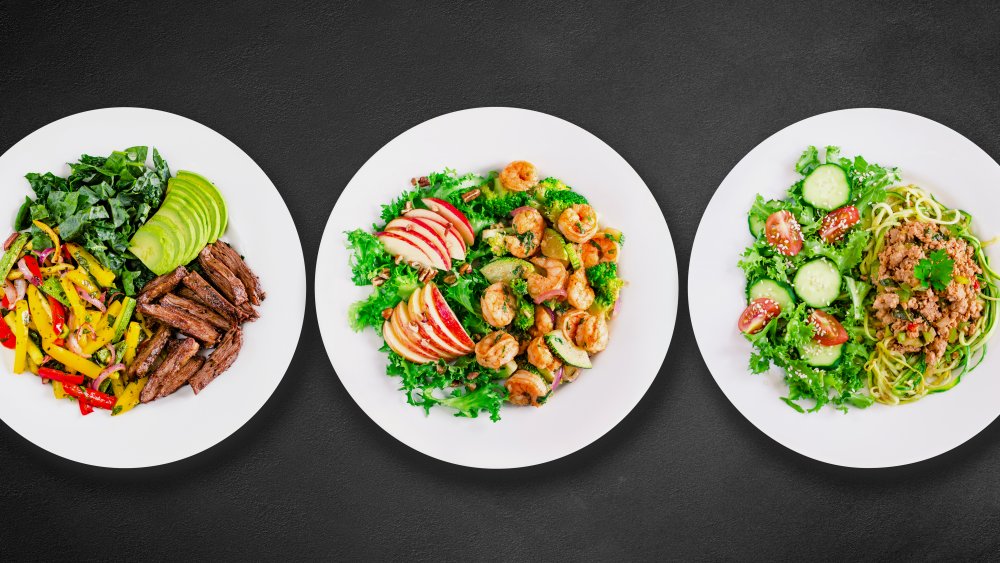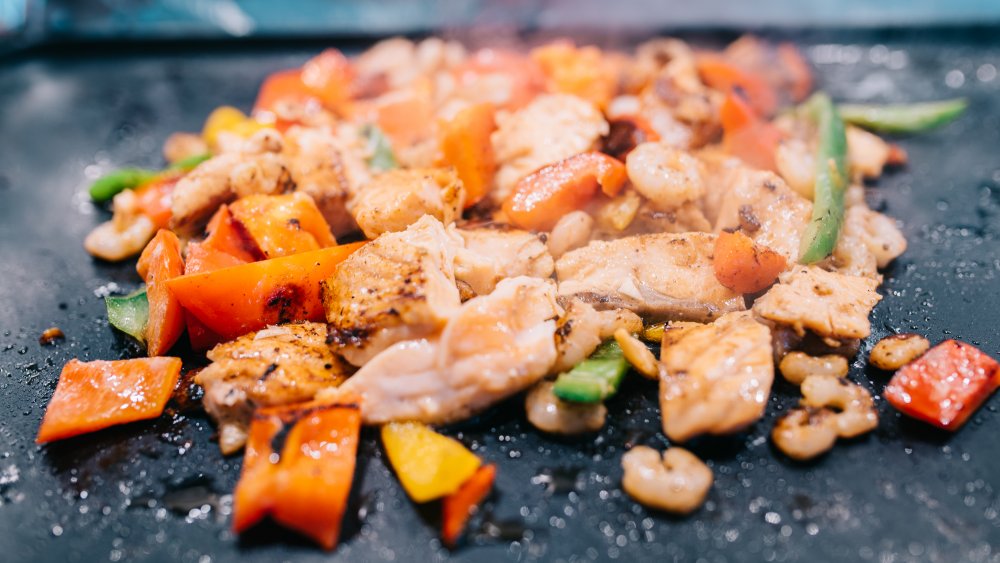The Real Difference Between The Whole30 And Paleo Diets
Deciding how to eat can be confusing if you're new to the world of diets, and two commonly confused options for those looking to decrease sugar and processed foods while feeling better in the process are the Whole30 and Paleo diets. But while at a glance, these two diets may seem similar, they actually have quite a few differences. Here's what you need to know to decide which one is right for you:
The Whole30 diet was developed in 2009 by Melissa Hartwig Urban to eliminate cravings, identify intolerances, and change one's relationship with food over the course of a month, while the Paleo diet was designed to emulate how early humans ate (via Mayo Clinic). Both diets focus on eating whole, natural foods while eliminating processed foods like gluten and sugar from your diet.
According to the Mayo Clinic, the Paleo diet is based on what people would have eaten during the Paleolithic era — namely a diet rich in lean meats, fish, fruits, vegetables, nuts, and seeds. The Whole30 is an 'elimination diet' that removes gluten, sugar, dairy, alcohol, and legumes from your diet (via Everyday Health). The foods you eat in both diets are similar, but the diets themselves have different goals.
One is long term, one is a quick-fix
If you're looking for a long-term solution, Whole30 isn't meant to be a lifestyle diet. The Whole30, as its name implies, is designed to be followed for 30 days, and eventually, you'll add back in certain foods that you reintroduce slowly to ensure that your body can handle them. "At the end of the 30 days, you'll carefully reintroduce those foods one at a time, like a scientific experiment, and then compare your experience physically and psychologically," Hartwig Urban told Everyday Health.
Paleo, on the other hand, is a framework meant to be followed for the rest of your life (or as long as you choose to eat according to the 'rules'). You won't add back in gluten, legumes, or processed treats at any point. But its definition isn't as hard and fast as the Whole30, and some versions of Paleo allow dairy, alcohol, and certain starches like sweet potatoes, depending on your needs (via The Paleo Diet).
The Whole30 framework might be the best way to introduce the Paleo way of eating into your life, since it has a more rigid framework and guidelines to follow as you get used to eating this way. Once your month of Whole30 is over, you can reintroduce some foods that are 'allowed' in a Paleo diet, like small amounts of wine and dark chocolate (via Healthline).


